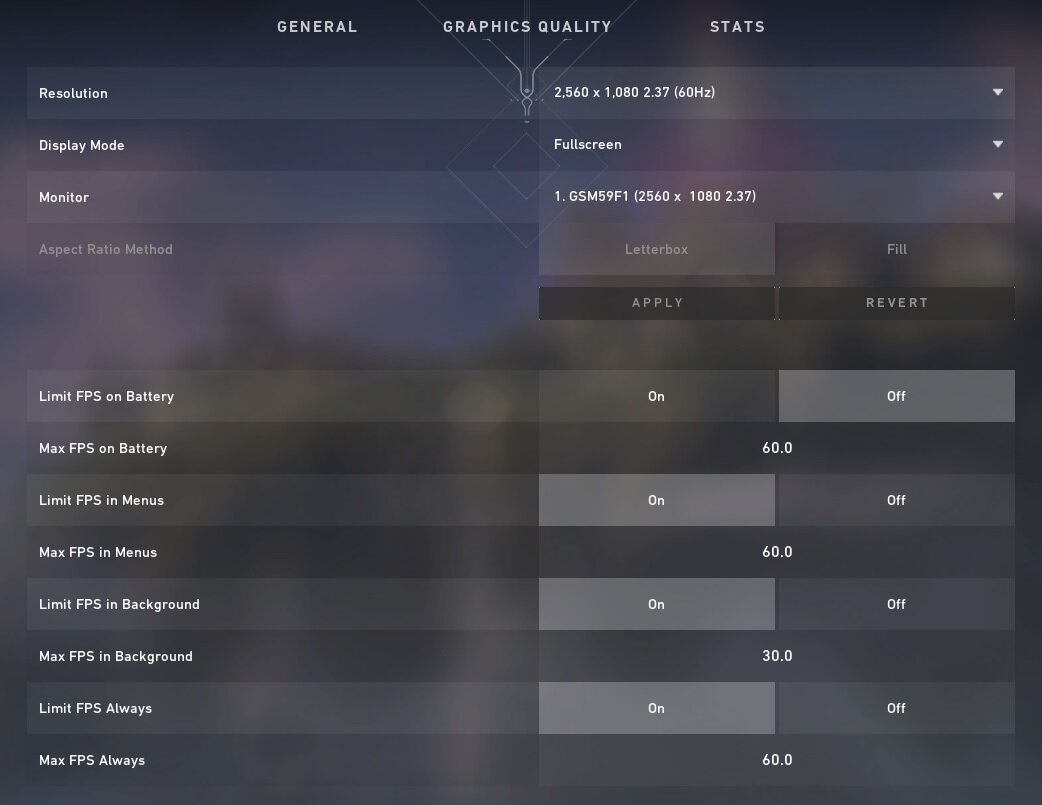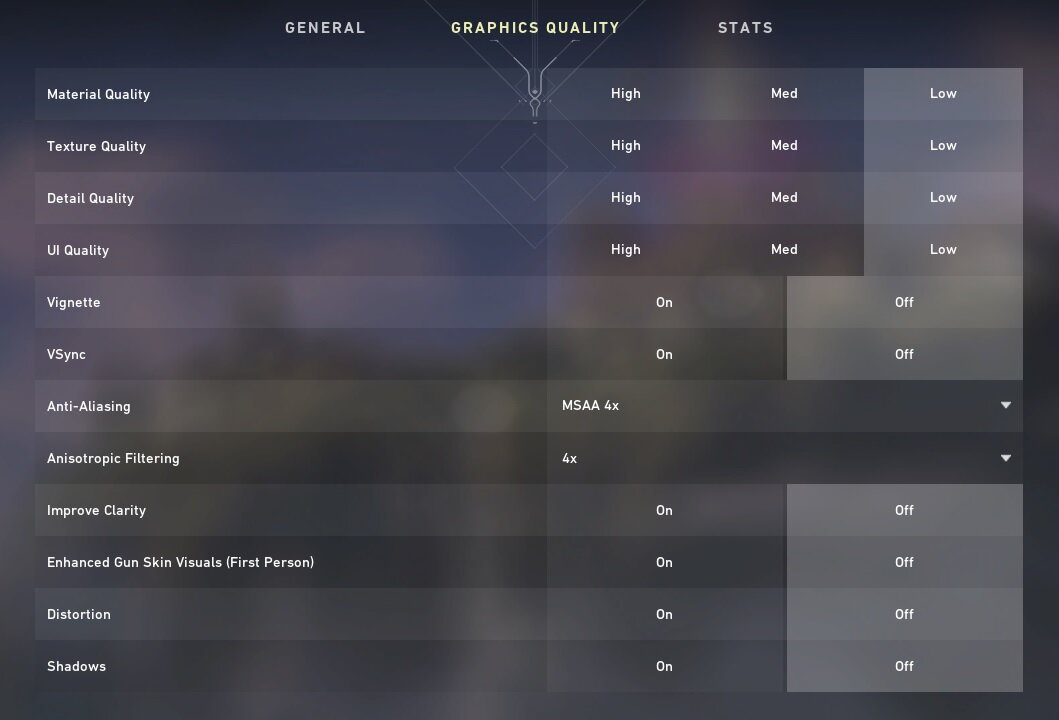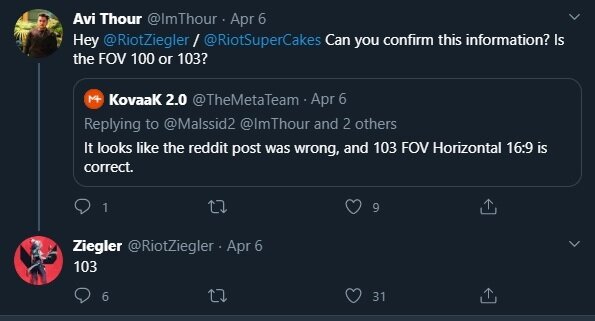How to increase FPS in Valorant: video settings

The video settings of Valorant can be optimized to increase your FPS and improve your gameplay.
On the web, you can find several configuration files to replace yours and boost the fps. Honestly, I don’t like this approach because I want to know exactly what I am changing, so I decided to review all the options in this article.
These adjustments are useful if you are struggling to reach an acceptable amount of fps as you are using a low-spec PC, but also if you have a monitor with a high refresh-rate because you bought it to gain an edge in a competitive shooter such as Valorant.
In-game settings
Launch Valorant, select the game icon on the top left, then go on Settings, and open the Video tab. I will show you how to set up each option for maximum performance.
General
Resolution: use your native one.
Using your native resolution is desirable for a better view, but if you badly need a performance boost, decreasing the resolution will greatly improve your fps. 720p is usually a solid compromise between quality and performance.
Display Mode: Fullscreen.
Fullscreen is the best choice performance-wise, but you might prefer Windowed Fullscreen if you have a multi-monitor setup and you wish to move quickly on another display.
Note: you can switch from Fullscreen to Windowed Fullscreen by pressing Alt+Enter on the keyboard.
Aspect Ratio Method: Letterbox.
If you use an ultrawide monitor, select Letterbox to not stretch the image (unfortunately, the game doesn’t allow 21:9 resolutions).
Limit FPS on Battery: Off.
Limit FPS in Menus: it depends on your preferences. I limit them to my monitor refresh rate.
Limit FPS in Background: it depends on your preferences.
Limit FPS Always: On.
Max FPS Always: your monitor refresh rate.
This is the fps cap. I suggest keeping it at the same value as your monitor refresh rate (60, 120, or 144Hz).
Note that unlocking the frame rate might cause overheating problems if your system isn’t cooled properly as the game will try to render as many frames as possible.
Graphic quality
Material Quality: Low or High.
Texture Quality: Low.
Detail Quality: Low.
It is hard to notice the difference between Texture and Detail Quality at Low and High, so I recommend keeping them at Low for maximum performance.
Instead, Material Quality at High brings a noticeable quality boost, thus I suggest testing a map on your PC to find out if you prefer more frames or a better viewing experience.
UI Quality: Low.
It doesn’t affect the game graphic.
Vignette: Off.
Vsync: Off.
Anti-Aliasing: MSAA 2x-4x or Off.
Anti-Aliasing is one of the settings with the greatest impact on FPS, but disabling it completely can distract you because it reduces the clarity of the image.
I suggest testing MSAA 2x-4x. If you really need those extra frames, disable it or try FXAA, but be aware that the latter can make the game look a bit blurry.
Anisotropic Filtering: 4x.
Anisotropic Filtering is quite easy to run nowadays, and it does contribute to the overall quality and clarity of the image. A low value such as 4x won’t impact heavily your FPS.
Improve Clarity: Off.
Improve Clarity sharpens the image. It brings a huge FPS drop on some systems (even a half). It is still not clear if this setting actually improves the clarity of the image, and honestly I couldn’t spot many differences. Turn it off if you need more frames.
Enhanced Gun Skin Visuals (First Person): Off.
Note: renamed as Bloom.
Distortion: Off.
Settings like Vignette and Distorsion generate visual effects on your screen that influence negatively the game performance and sometimes also your gameplay, so I suggest disabling them.
Shadows: Off. Renamed to First Person Shadows
Characters don’t have shadows, and there is not a way to disable the static ones (buildings, objects). This setting purely affects your weapon and arms, so just turn it off.
Note: renamed as First Person Shadows.
Field of view
There is not a field of view (FoV) slider in Valorant, and most probably Riot won’t add it.
Riot Ziegler, Game Director of Valorant, confirmed that the game uses a 103 Horizontal FoV based on the 16:9 aspect ratio.
103 horizontal FoV is equal to 87 vertical FoV with a 4:3 aspect ratio and to 71 with a 16:9 one.
103 is the same maximum FoV value allowed by Overwatch. Instead, CS:GO uses a slightly wider one: 106.
GameUserSettings.ini file
To find your configuration file, press Win+R and then input the following line:
%USERPROFILE%\AppData\Local\ShooterGame\Saved\Config\WindowsClientPress the right mouse button on GameUserSettings.ini and open it with WordPad or another text editor. I use Notepad++.
There are not many settings, and you can already find all of them inside the game menu.
Sincerely, I don’t even know if we are allowed to modify the file directly because Riot is fighting hard against all kinds of hackers and exploiters, thus I wouldn’t be surprised if they don’t want us to fiddle with the game files.
GamerUserSettings.ini path
The following video explains and compares most video settings.





